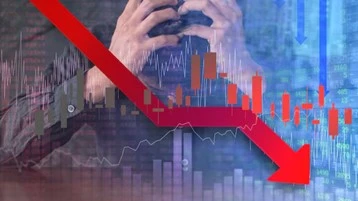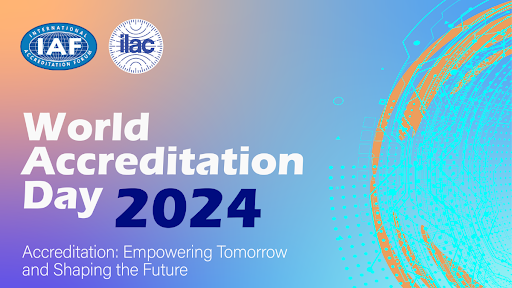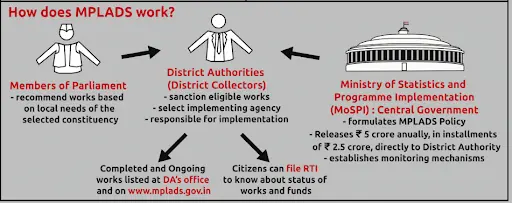Friday, 14th June 2024
Government’s Tax Devolution to States
Why in the news:
- Recently, the Central Government has released an instalment of ₹1.39 lakh crore for tax devolution to the states.
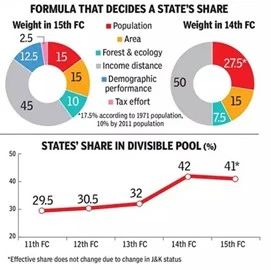 About:
About:
- The regular devolution amount for June 2024 includes an additional instalment, enabling State Governments to accelerate development and capital spending.
- These additional funds will support State Governments in enhancing their developmental activities and infrastructure projects, thereby boosting economic growth at the state level.
- The Interim Budget for FY25 had earmarked Rs. 12.19 trillion towards the devolution of taxes to states.
- With this release, the total amount devolved for FY25 to states till 10 June stands at Rs. 2.8 trillion.
What is the tax devolution ?
- Tax devolution refers to the distribution of tax revenues between the central government and state governments.
- It is a constitutional mechanism designed to allocate the proceeds of certain taxes among the Union and the states in a fair and equitable manner.
- Article 280(3)(a) of the Constitution of India mandates that the Finance Commission (FC) is responsible for making recommendations on the division of the net proceeds of taxes between the Union and the states.
- Article 270 of the Constitution provides for the scheme of distribution of net tax proceeds collected by the Union government between the Centre and the States.
The basis for allocation by recommendations of 15th Finance Commission:
- Share of States in Central Taxes (Vertical Devolution):
- 2021-26 Period: States' share in central taxes is set at 41%, the same as in 2020-21.
- Comparison with 2015-20: This is lower than the 42% recommended by the 14th Finance Commission.
- Reason for Adjustment: The 1% reduction accounts for the resources needed for the newly formed union territories of Jammu and Kashmir, and Ladakh.
- Horizontal Devolution (Allocation Between the States):
- Demographic Performance: 12.5% weightage.
- Income: 45% weightage.
- Population: 15% weightage.
- Area: 15% weightage.
- Forest and Ecology: 10% weightage.
- Tax and Fiscal Efforts:5% weightage.
- Revenue Deficit Grants to States:
- Definition: Revenue deficit is the gap between revenue expenditure and revenue receipts, including tax and non-tax income.
- Recommendation: Post-devolution revenue deficit grants totaling approximately Rs. 3 trillion over the five years ending FY26.
- Performance-Based Incentives and Grants to States:
- Themes:
- Social Sector: Focuses on health and education.
- Rural Economy: Emphasises agriculture and maintenance of rural roads, crucial for two-thirds of the population, 70% of the workforce, and 46% of national income.
- Governance and Administrative Reforms: Includes grants for judiciary, statistics, and aspirational districts and blocks.
- Power Sector: Implements a performance-based incentive system, offering an additional borrowing window for states, not linked to grants.
- Themes:
- Grants to Local Governments:
- Municipal Services and Local Government Bodies: Includes performance-based grants for new city incubation and health grants.
- Urban Local Bodies:
- Basic Grants: For cities/towns with populations under a million.
- Million-Plus Cities: 100% performance-linked through the Million-Plus Cities Challenge Fund (MCF).
- MCF: Linked to performance in improving air quality and meeting benchmarks for urban drinking water supply, sanitation, and solid waste management
Criticism and Issues:
- Centralised Constitutional Scheme: Historically, India's constitutional framework has favoured a strong central authority in legislative, administrative, and financial matters.
- Federalism Concerns: Despite federalism being a fundamental feature, there is a concern that states might feel disadvantaged in resource distribution.
- Political Dynamics: Political differences between the Union government and Opposition-ruled states exacerbate these issues, alongside genuine concerns that merit attention.
Suggestions and Way Ahead:
- Enlarge Divisible Pool: Include portions of cess and surcharge in the divisible pool to increase resources available for distribution.
- Rationalise Tax Structure: Gradually phase out various cesses and surcharges while rationalising tax slabs to simplify the tax regime.
- Efficiency Criteria in Horizontal Devolution: Increase the weightage given to efficiency criteria in horizontal devolution to promote effective resource utilisation.
- Incorporate GST Contributions: Considering GST's role as a consumption-based destination tax, include states' relative GST contributions as a criterion in future Finance Commissions.
- Formal State Participation: Establish a formal mechanism, akin to the GST Council, for states' participation in the constitution and functioning of the Finance Commission.
- Consultative Approach: Implement these measures through inclusive discussions with all states to ensure consensus and cooperation.
- Fiscal Federalism: Uphold principles of fiscal federalism by ensuring adequate devolution of resources to local bodies for robust and accountable development.
|
UPSC Civil Services Examination, Previous Year Question (PYQ) Prelims Q:1 Consider the following: (2023)
For the horizontal tax devolution, the Fifteenth Finance Commission used how many of the above as criteria other than population area and income distance? (a) Only two Ans: (b) Mains Q:1 Discuss the recommendations of the 13th Finance Commission which have been a departure from the previous commissions for strengthening the local government finances. (2013) |
Source: ET
Eco-Sensitive Zones in Western Ghats
Why in the news ?
- Karnataka, Maharashtra, and Goa, three of the six states where the Centre has proposed eco-sensitive areas (ESA) to safeguard the Western Ghats, have asked for a reduction in the size of these ESAs to allow for development activity.
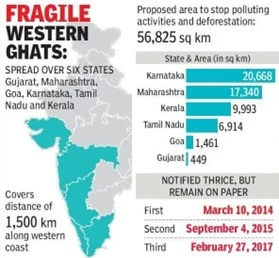 About Eco-Sensitive Zones:
About Eco-Sensitive Zones:
- The National Environment Policy (2006) defines Eco-Sensitive Zones (ESZs) as areas with significant environmental resources that require special conservation attention due to their landscape, wildlife, biodiversity, and historical values.
- These zones are regulated by the Ministry of Environment, Forest and Climate Change (MoEFCC) under the Environment Protection Act, 1986.
- According to the National Wildlife Action Plan (2002-2016), Eco-Sensitive Areas (ESAs) are designated within a 10 km radius around protected areas like national parks and wildlife sanctuaries.
Purpose of Eco-Sensitive Zones (ESZs):
- Environmental Protection: ESZs protect the environment from human activities, preserving landscapes, wildlife habitats, biodiversity, and historical sites.
- Barrier and Shock Absorber: ESZs buffer Protected Areas (PAs) like national parks, mitigating impacts from surrounding human activities to maintain ecological balance.
- Transition Zones: ESZs are transitional areas between regions of varying environmental protection levels, ensuring continuous conservation efforts across landscapes.
Why Western Ghats is Important:
- Geographical Significance: The Western Ghats is a mountain range that stretches parallel to the western coast of the Indian peninsula, entirely within India.
- UNESCO World Heritage Site: Designated as a UNESCO World Heritage Site, it is recognized as one of the eight "hottest hot-spots" of biological diversity globally.
- Ecological Diversity: The region hosts 39 properties, including national parks and wildlife sanctuaries, distributed across Kerala (20), Karnataka (10), Tamil Nadu (5), and Maharashtra (4).
- Rich Biodiversity: It boasts a remarkable diversity of species, including 7,402 species of flowering plants, 1,814 species of non-flowering plants, 139 mammal species, 508 bird species, 179 amphibian species, 6,000 insect species, and 290 freshwater fish species.
Conservation Efforts:
- Committees such as the Gadgil and Kasturirangan committees have been tasked over the past eight years to identify and safeguard these critical areas.
K. Kasturirangan Committee Recommendations:
- Formation and Purpose:
- In August 2012, the Ministry of Environment and Forests (MoEF) constituted a high-level working group (HLWG) chaired by K. Kasturirangan.
- The committee's mandate was to propose a comprehensive strategy for sustainable and equitable development while prioritising the conservation of ecological systems in the Western Ghats, a global biodiversity hotspot.
- Reduction in ESA Coverage: It proposed reducing the area under Ecologically Sensitive Areas (ESAs) to 37% of the Western Ghats, down from the 64% recommended by the Gadgil report.
- Cultural and Natural Landscape Differentiation: The report distinguished between cultural landscapes (including human settlements, agricultural fields, and plantations) covering 58.44% of the Western Ghats, and natural landscapes.
- Mining Ban: It recommended a complete ban on mining, quarrying, and sand mining in 90% of the remaining natural landscape identified as ESAs.
- Pro-Farmer Recommendations: The committee suggested excluding inhabited regions and plantations from the ESAs, emphasising livelihood considerations.
- Methodological Criticism: Criticism was directed at the committee for using remote sensing and aerial survey methods for land demarcation, which inaccurately included many villages within ESA
Gadgil report recommendations:
- Ecologically Sensitive Area Designation: The entire Western Ghats hill range was classified as an Ecologically Sensitive Area (ESA).
- Classification of ESZs: The panel categorised the 142 taluks within the Western Ghats boundary into Ecologically Sensitive Zones (ESZ) 1, 2, and 3, each with varying levels of environmental sensitivity and regulation.
- Restrictions on Development:
- Dams: No new dams based on large-scale storage were recommended in ESZ 1.
- Mining: In Goa, an indefinite moratorium on new environmental clearances for mining was proposed in ESZ 1 and 2.
- Polluting Industries: No new polluting industries, including coal-based power plants, should be permitted in ESZ 1 and 2. Existing red and orange category industries were urged to transition to zero pollution by 2016.
- Approach to Governance: The committee advocated for a bottom-up approach, involving local Gram Sabhas and communities in decision-making, contrasting with a top-down governance model.
- Proposed Statutory Authority: It recommended the establishment of a Western Ghats Ecology Authority (WGEA) empowered under the Environment (Protection) Act to oversee and enforce environmental regulations in the region.
- Criticism: The Gadgil Committee faced criticism for its stringent environmental recommendations, perceived as not aligned with ground realities and local economic interests, despite its environmental friendliness.
Concerns:
- State Opposition: States oppose the Kasturirangan panel report on Ecologically Sensitive Areas (ESAs) in the Western Ghats, fearing negative impacts on local livelihoods.
- Impact on Livelihoods: Declaring ESAs could hinder development activities crucial for economic growth, potentially affecting livelihoods of thousands.
- Relocation Issues: Concerns exist that ESA declaration may necessitate the relocation of villagers, disrupting their communities.
Way Ahead:
- Conservation Benefits: ESAs conserve fragile ecosystems, ensuring sustainable water resources, enhancing pollination for agriculture, and reducing human-animal conflicts.
- Balanced Approach: Addressing states' concerns while upholding ecological protection principles is crucial. A uniform approach should be adopted for effective conservation.
- Expert Committee’s Role: Despite the deadline, the Environment Ministry's expert committee aims to submit a report by September, proposing solutions that reconcile conservation goals with developmental needs.
Source: IE
India’s Leading Start-up Ecosystem: Fintechs
Why in the News ?
- Fintech companies remain a top choice for entrepreneurs in the startup ecosystem, securing over 15% of total equity funding in FY24, as per Tracxn data.
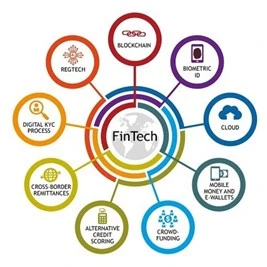 What are Fintechs ?
What are Fintechs ?
About:
- Fintech, derived from "financial" and "technology," refers to businesses leveraging technology to enhance or automate financial services and processes.
Types:
- Digital Payments: Provide solutions like mobile wallets, online payment gateways, and peer-to-peer (P2P) payments. Examples: PhonePe, Paytm.
- Alternative Lending: Also known as marketplace or Peer-to-Peer (P2P) lending, connecting borrowers bypassed by traditional lenders with investors seeking high-yield investments. Examples: Lending Club, Prosper, PayPal Working Capital, GoFundMe.
- Insurance: Offer digital insurance solutions such as health, life, and car insurance. Examples: Digit Insurance, Policybazaar.
- InvestmentTech: Provide digital investment services like stock trading, mutual funds, and cryptocurrency trading. Examples: Zerodha, Groww.
- Other Types Include:
- Crop loan risk management (e.g., Satsure)
- Online fraud detection (e.g., Tutelar)
- Debt management (e.g., Debt Nirvana)
- Banking-as-a-Service Platform (e.g., FidPay
The State of Fintech Industry in India:
- Global Leadership: India ranks third globally in fintech, following the US and UK, with a combined valuation exceeding USD 155 billion.
- Soonicorn Presence: Nearly a third of the soonicorn universe comprises fintech companies.
- Market Size Projection: The fintech industry in India is expected to reach USD 150 billion by 2025, as per Startup India initiative.
- High Adoption Rate: Fintech companies in India boast an 87% adoption rate among diverse user bases, surpassing the global average of 64% (Economic Survey 2022-23).
- Driving Digital Payments: Indian fintechs dominate digital payment transactions, accounting for 70% of the market, marking a significant increase from FY19 to FY22.
- Financial Inclusion: Over 10 million individuals and small businesses have gained access to savings accounts, insurance, investments, and credit through mobile-based fintech services.
- Democratising Lending: Peer-to-peer lending platforms democratise access to funds for individuals and small businesses, reducing dependency on traditional financial institutions.
- Rise in Public Investment: Investment platforms and robo-advisors are enhancing accessibility to stocks, mutual funds, and other financial instruments, encouraging public investment.
The Government Initiatives Driving the Growth of FinTech:
- Digital Identity Infrastructure (JAM Trinity) :
- Jan Dhan Yojana (PMJDY): World's largest financial inclusion program with over 450 million beneficiaries, enabling FinTechs to offer financial products like remittances, credit, insurance, and pensions directly through these accounts.
- Aadhaar: Facilitated bank account openings for over 570 million previously unbanked adults in India, enhancing financial access.
- Aadhaar Enabled Payment System (AePS): Allows Aadhaar holders to conduct financial transactions using biometric authentication.
- Unified Payments Interface (UPI): Transaction volume surged 49% year-on-year, with the number of integrated banks increasing from 414 to 581, driving overall transaction growth.
- Regulatory Support and Innovation:
- P2P Lending Recognition: RBI recognition of P2P lending platforms as NBFCs in 2017 expanded credit access for individuals and small businesses.
- Regulatory Sandbox (RS) and Fintech Repository: RS facilitates live testing of products before mass launch, while the Fintech Repository promotes transparency and regulatory compliance.
- Self-Regulatory Organizations (SRO) Framework: Introduced by RBI in 2023, SROs promote responsible growth, enforce industry codes of conduct, and ensure consumer protection within the FinTech sector.
Potential Growth Areas for the Fintech Sector in India:
- SME Lending: Fintech solutions using alternative data and AI-driven credit scoring to improve access to credit for SMEs, overcoming traditional barriers.
- Supply Chain Financing: Blockchain-based fintech solutions streamline payments, enhance transparency, and optimise working capital management in supply chains.
- Agritech: Innovations in crop loan risk management, micro-insurance, and digital marketplaces for agricultural products support rural communities and empower farmers.
- Regulatory Landscape and Stability:
- RBI's framework addressing "user harm" in fintech fosters long-term stability, despite potential short-term cautiousness.
- Clear regulations promote consumer protection, build trust, and attract sustainable investment in the sector.
|
UPSC Civil Services Examination Previous Year Question (PYQ) Prelims Q:1 With reference to “Blockchain Technology”, consider the following statements: (2020)
Which of the statements given above is/are correct? (a) 1 only Ans: (d) Q:2 With reference to India, consider the following: (2010)
Which of the above can be considered as steps taken to achieve the “financial inclusion” in India? (a) 1 and 2 only Ans: (d) |
Source: TH
Atomic Clock
Why in the news ?
- In a recent study published in the scientific journal Nature, researchers introduced a new type of portable iodine optical atomic clock designed for use on ships.
- While not as precise as laboratory-grade optical atomic clocks, this new clock offers increased portability and durability.
- It has an accuracy that allows it to gain or lose a second only once every 9.1 million years.
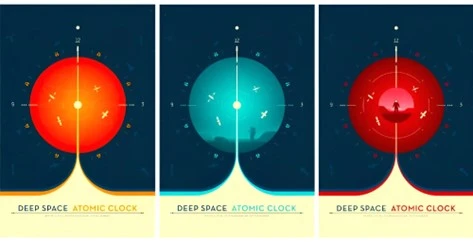 What are Atomic Clocks?
What are Atomic Clocks?
About:
- Atomic clocks are advanced timekeeping devices that rely on the natural vibrations of atoms to measure time with unparalleled precision.
- Developed by Louise Essen in 1955, India currently operates atomic clocks in Ahmedabad and Faridabad.
Key Features:
- Atomic clocks are significantly more accurate than traditional clocks due to the high frequency and stability of atomic oscillations.
- Traditional atomic clocks can maintain accuracy to within one second over 300 million years, while optical atomic clocks extend this precision to 300 billion years.
- A caesium atomic clock, for instance, gains or loses a second approximately every 1.4 million years.
Working Principle:
- Caesium (Cs) atomic clocks operate by exposing Cs atoms to microwave radiation in a resonant cavity.
- The frequency of the microwave radiation matches the energy transition frequency of Cs atoms (9,192,631,770 Hz).
- When Cs atoms absorb this radiation, they move to a higher energy state, marking one second when they complete 9,192,631,770 oscillations.
- Precise time measurement is ensured by detecting any frequency deviations and adjusting the microwave radiation accordingly to maintain resonance.
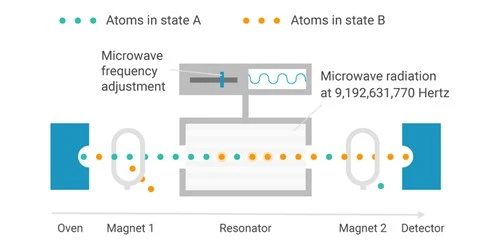 Optical Atomic Clock:
Optical Atomic Clock:
- Optical atomic clocks surpass the accuracy of standard atomic clocks.
- They utilise lasers to induce atomic transitions, generating coherent light with uniform frequency and stable wavelengths.

- Comparison with Atomic Clocks:
- Higher Operating Frequency:
- Optical atomic clocks operate at higher frequencies than traditional atomic clocks, allowing them to complete more oscillations per unit of time.
- This capability enables them to measure smaller increments of time with greater accuracy.
- Narrower Linewidth:
- Optical atomic clocks have much narrower linewidths, which refers to the range of frequencies over which the atomic transition occurs.
- This narrow linewidth makes it easier to precisely match the frequency of the optical light used to stimulate atomic transitions.
- Technology and Element Used:
- The element strontium (Sr) is commonly employed in optical atomic clocks due to its stable optical transitions and exceptionally narrow linewidths, contributing to their enhanced accuracy.
- Higher Operating Frequency:
Applications of Optical Atomic Clocks:
- Self-Reliance and National Security:
- Developing domestic optical atomic clocks reduces dependence on foreign technology, enhancing national security.
- This is crucial for ensuring the reliability of critical infrastructure such as NavIC (Indian GPS) during conflicts.
- Enhanced Accuracy and Reliability:
- Optical atomic clocks offer unparalleled precision, making them ideal for synchronising all digital devices with Indian Standard Time (IST).
- This ensures a unified and highly accurate time reference across the nation.
- Telecommunications:
- Precise timing provided by optical atomic clocks minimises errors in communication networks, facilitating seamless data transfer and enhancing overall network performance.
- Financial Systems:
- Optical atomic clocks provide accurate timestamps for financial transactions, crucial for mitigating fraud risks, especially in high-frequency trading environments.
- Cybersecurity:
- Reliable timestamps from optical atomic clocks bolster India's cybersecurity framework by ensuring the accuracy and integrity of transaction records, thereby enhancing fraud prevention and data security measures.
- Critical Infrastructure and Power Grids:
- Optical atomic clocks play a pivotal role in synchronising critical infrastructure, including power grids, transportation systems, and emergency services.
- This synchronisation improves operational efficiency, reliability, and response times during emergency
|
UPSC Civil Services Examination, Previous Year Question (PYQ) Prelims: Q.1 Which one of the following countries has its own Satellite Navigation System? (2023)
Ans: d |
Visceral Leishmaniasis (VL)
Why in the news ?
- Recently, the World Health Organization (WHO) launched a framework to eradicate visceral leishmaniasis (VL) in eastern Africa.
- In 2022, eastern Africa accounted for 73% of global VL caseload, 50% of which occurred in children aged under 15 years.
 About Visceral Leishmaniasis (VL):
About Visceral Leishmaniasis (VL):
- Cause: VL is a severe and potentially fatal disease caused by the Leishmania parasite.
- Also Known As: Commonly referred to as kala-azar or black fever.
- Transmission: Transmitted by infected female phlebotomine sandflies.
- Vulnerable Population: Primarily affects infants and children, though adults can also be infected.
- Symptoms: Fever, weight loss, and enlargement of the spleen and liver.
- Fatality Rate: Untreated cases can lead to a fatality rate as high as 100% within 2 years. It is the second deadliest parasitic disease globally, after malaria.
- Endemic Areas: Endemic in 80 countries worldwide. In India, VL is caused exclusively by the Leishmania donovani parasite.
- Eradication Efforts: Bangladesh achieved the first countrywide eradication of VL in 2023.
- Post Kala-azar Dermal Leishmaniasis (PKDL) – It is a condition when Leishmania donovani invades skin cells, resides and develops there and manifests as dermal lesions.
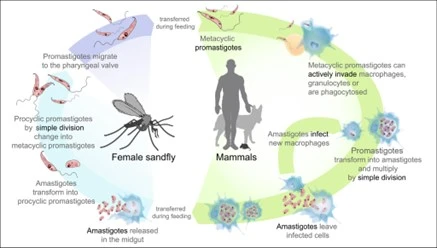
Initiatives on VL Elimination:
Global Initiatives:
- WHO’s New Roadmap (2021–2030): Aims to prevent, control, eliminate, and eradicate neglected tropical diseases, including visceral leishmaniasis (kala-azar), by 2030.
- Global Programme to Eliminate Lymphatic Filariasis (GPELF):
- Seeks to eliminate lymphatic filariasis, onchocerciasis, and kala-azar through Mass Drug Administration (MDA).
- The 2020 global elimination target was missed due to COVID-19, with efforts now accelerated for achievement by 2030.
Indian Initiatives:
- Government Efforts: India aims to eliminate kala-azar by 2023, implementing initiatives such as PM-AWAS Yojana for housing, rural electrification, and comprehensive healthcare including testing, treatment, and surveillance.
- National Kala-azar Elimination Programme:
- Originally targeted for 2010 (revised to 2015), aligned with the National Health Policy-2002.
- India collaborates with Bangladesh and Nepal under a Tripartite MoU for elimination within the South-East Asia Region (SEAR).
- Implementation: Activities are managed under the National Vector Borne Disease Control Programme (NVBDCP), operating within the framework of the National Health Mission (NHM) to ensure comprehensive disease management and prevention strategies.
|
UPSC Civil Services Examination, Previous Year Question (PYQ) Prelims: Q:1 Consider the following statements: (2017)
Which of the statements given above is/are correct? (a) 1 only Ans: (c) |
Source: DTE
Global Gender Gap Index
Why in the news ?
- The Global Gender Gap Index is an annual report produced by the World Economic Forum (WEF) that measures gender-based gaps in access to resources and opportunities in countries around the world.
- India ranks 129 in the World Economic Forum’s Global Gender Gap Index.
- It is the longest-standing index, tracking progress towards closing these gaps over time since its inception in 2006.
- It tracks the gender gap across four key parameters:
- Economic participation and opportunity,
- Educational attainment,
- Health and survival, and
- Political empowerment.
- It ranks countries on a scale from 0 to 1, with a score of 1 indicating that a country has achieved complete gender equality, while a score of 0 indicates a complete lack of equality.
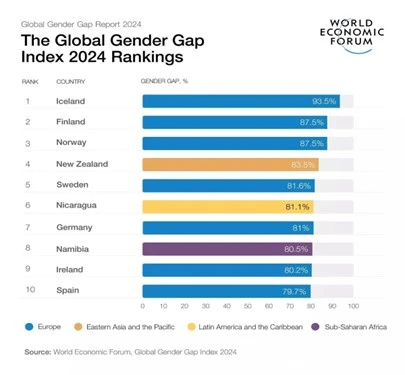 Key findings in the report:
Key findings in the report:
- Global Gender Gap Score: In 2023, the gender gap is 68.4% closed across 146 countries.
- Top Performing Countries: No country has achieved full gender parity, but the top nine (Iceland, Norway, Finland, New Zealand, Sweden, Germany, Nicaragua, Namibia, and Lithuania) have closed at least 80% of their gap.
- Iceland's Leadership: For the 14th consecutive year, Iceland ranks first with 91.2% of its gender gap closed, the only country surpassing 90%.
- Gap Closures by Category:
- Health and Survival: 96% closed
- Educational Attainment: 95.2% closed
- Economic Participation and Opportunity: 60.1% closed
- Political Empowerment: 22.1% closed
Gender Gaps in the Global Labor Market:
- Labor Force Participation: Between 2022 and 2023, global gender parity in labour force participation increased slightly from 63% to 64%.
- Unemployment Rates: Women globally face higher unemployment rates compared to men, with women at approximately 4.5% and men at 4.3%.
- Representation in Workforce and Leadership: Women's representation in the workforce and leadership roles remains low at 32.2%, nearly 10 percentage points lower than men.
- STEM Occupations: STEM (Science, Technology, Engineering, and Mathematics) jobs are critical for future growth and well-remunerated. Despite comprising nearly half of non-STEM employment (49.3%), women make up only 29.2% of all STEM workers.
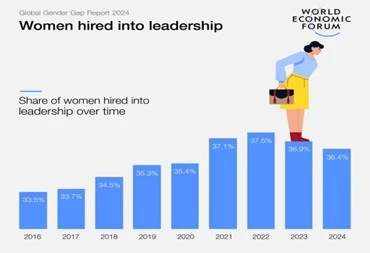 Gender Gaps in Political Leadership:
Gender Gaps in Political Leadership:
- Global Trends: There has been an increase in women holding political decision-making roles globally, but gender parity remains distant with significant regional disparities.
- Female Heads of State: As of December 31, 2022, approximately 27.9% of the global population, totaling 2.12 billion people, live in countries with a female head of state.
- Women in Parliaments: By 2022, women's representation in parliaments worldwide reached 22.9%, showing steady progress.
- Local Government Representation: Globally, strides have been made in women's representation in local government. Out of 117 countries with data since 2017, 18 countries, including Bolivia (50.4%), India (44.4%), and France (42.3%), have achieved over 40% representation of women in local governance.
How has India fared?
- India has closed 64.1% of its gender gap in 2024 and has declined two places from 127th last year to 129th. It ranked the third lowest among the South Asian economies.
- Bangladesh stands at the 99th position, Nepal at 117th, Sri Lanka at 122nd, Bhutan (0.651) at 124th, and Pakistan (0.570) at the 145th position among the immediate neighbours.
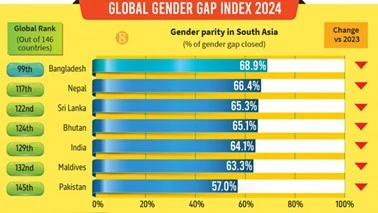
- India’s rank in all the four parameters:
- Economic Participation and Opportunity – 142
- Health and Survival – 142
- Educational Attainment – 112
- Political empowerment – 65
- In the political empowerment sub-index, it scored within the top 10 on the head-of-state indicator with a 40.7% score; representation at the federal level remains low. Women hold only 6.9% of ministerial positions and 17.2% of parliamentary seats.
- India’s economic parity stood at 39.8 per cent. This means that women in India, on average, earn Rs 39.8 for every Rs 100 that men earn.
|
Regional Results and Time to Parity: ● Europe: Overall Score: 75% gender gap closed in 2024, +6.2% since 2006. Top Performers: Iceland, Finland, Norway, Sweden, and Germany in global top 10. Disparities: Broad gaps, with Iceland leading by 29% over Türkiye. Economic Parity: Slight increase to 67.8%. Education: Third-highest globally at 99.5%. Political Parity: Highest score at 36%. ● Northern America : Overall Score: 74.8% gender gap closed, +4.3% since 2006. Economic Parity: Leading but slightly declined to 76.3%. Education: 100%. Health: 96.9%. Political Empowerment: Third with 26%, progress since 2006. ● Latin America and the Caribbean: Overall Score: 74.2%, +8.3% since 2006. Economic Parity: Highest score to date at 65.7%. Education: 99.5%. Health: 97.6%. Political Empowerment: Second highest at 34%, +22.4% since 2006. ● Eastern Asia and the Pacific: Overall Score: 69.2%, +3.1% since 2006. Economic Parity: 71.7%. Education: 95.1%. Health: Last at 95%. Political Empowerment: Improved to 14.5%, third from bottom. ● Central Asia: Overall Score: 69.1%, +2.3% since 2006. Top Performers: Armenia (72.1%), Georgia (71.6%), Kazakhstan (71%). Economic Parity: 73.4%, -0.6 points from 2023. Education: Near parity at 99.6%. Political Empowerment: 12.8%, -1.6 points. ● Sub-Saharan Africa: Overall Score: 68.4%, +5.6% since 2006. Top Performer: Namibia in global top 10. Economic Parity: 68.1%. Education: Last at 88.9%. Health: 97.1%. Political Empowerment: 22.6%, notable strides in Mozambique and South Africa. ● Southern Asia: Overall Score: 63.7%, +3.9% since 2006. Economic Parity: Lowest at 38.8%. Education: 94.5%, +13.4% since 2006. Health: Stable at 95.4%. Political Empowerment: 26%, -0.7 points from 2023. ● Middle East and North Africa (MENA): Overall Score: 61.7%, +3.9% since 2006. Economic Parity: 43.1%. Education: 97.2%. Health: 96.4%. Political Empowerment: Lowest at 11.7%, +8.4% since 2006. |
|
UPSC Civil Services Examination Previous Year Question (PYQ) Prelims Q:1 Which of the following gives ‘Global Gender Gap Index’ ranking to the countries of the world? (2017) (a) World Economic Forum Ans: (a) |
Gandhi Sagar Sanctuary
Why in the news:
- Recently, MP completed preparations for a second cheetah home – Gandhi Sagar Sanctuary. Prey animals have been relocated from Kanha, Satpura and Sanjay tiger reserves.
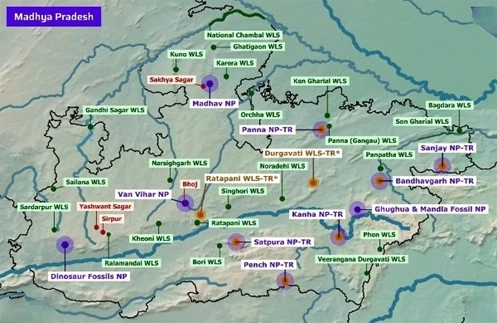
- Location: 270 km from the Kuno National Park in Madhya Pradesh bordering Rajasthan.
- It was notified in 1974 and added to the list of sanctuaries in 1984.
- It is spread over the area surrounding the Gandhi Sagar Dam backwater, and Chambal flows through it.
- The forest of this sanctuary is part of the Khathiar-Gir dry deciduous forest, which includes trees like Salai, Kardhai, Dhawda, Tendu, Palash, etc.
- Chaturbhuj Nala rock shelters are also part of the same Gandhi Sagar wildlife sanctuary.
- Landscape: Open landscapes with sparse vegetation, rocky terrain, and small dense forest patches.
- River: Chambal divides the sanctuary into two parts.
- Vegetation: Northern tropical dry deciduous forest, mixed deciduous forest, and dry deciduous scrub.
- Flora: Khair, Salai, Kardhai, Dhawda, Tendu, Palash are principal tree species.
- Fauna: Herbivores like Chinkara, Nilgai, Spotted Deer, carnivores like Indian Leopard, Striped Hyena, Jackal, and diverse aquatic life including crocodiles, fish, otters, turtles.
- Historical sites: Chaurasigarh, Chaturbhuj Nath temple, Bhadkaji rock paintings, Narsinghjhar Hinglajgarh fort, Tarakeshwar temple.
Chaturbhuj Nala rock shelters:
- The Chaturbhuj Nala rock shelters date from the pre-pastoral (over 6,000-12,000 years old) to the early medieval age (10th century) and are often compared to the UNESCO-approved Bhimbetka rock shelters.
- These paintings use shades of red, ochre, white and black.
- These paintings depict ancient lifestyles, such as men riding cattle, women dancing, warriors marching, and hunting scenes portraying rhinos, humpless cattle, and deer being chased and hunted with arrows.
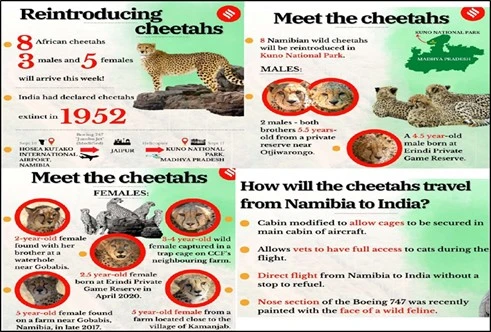 Source: (IE)
Source: (IE)
Global Economic Prospects Report
Why in the News:
- India will remain the fastest-growing major economy, with a steady growth of 6.7% over the next three years, according to the Global Economic Prospects report published by the World Bank.
Key Takeaways:
- The global growth will remain at 2.6% in 2024 (projected – 2.7% in 2025-26), marking steady growth in three years despite heightened geopolitical tensions and elevated interest rates.
- Inflation remains a concern, with global inflation expected to moderate at a slower pace.
- In 2024-25, nearly 60% of economies, representing more than 80% of the global population and world output, are projected to experience growth below their 2010s average.
- The growth in emerging markets and developing economies (EMDE) is forecast to moderate from 4.2% in 2023 to 4% in 2024 and 2025, so it will likely remain cautious in easing monetary policy.
- Growth in the South Asia Region is projected to slow to 6.2 per cent in 2024 from 6.6 per cent in 2023, which was primarily driven by faster growth in India.
India:
- India’s growth is expected to slow down mainly due to a slowdown in investment activity.
- India’s economy grew by an estimated 8.2% in FY24, exceeding previous forecasts by nearly 2% points.
- In India, stronger-than-expected manufacturing, construction, and resilient services offset a slowdown in agriculture due to monsoons.
- India’s economy has been driven by strong domestic demand and robust service activity.
|
● Other important reports by the World Bank: World Development Report, the Remittance Report, the Ease of Living Index, the Logistics Performance Index, the Universal Health Coverage Index, The Service Trade Restriction Index, and the India Development Update. |
Source: IE
A chance to reboot relations with the West
Context:
- As a frequent G7 participant, India seeks to deepen collaboration with the "collective West." With the West eager to include India in global governance, the upcoming G7 summit in Italy is a prime opportunity for India to reboot its ties with Western nations.
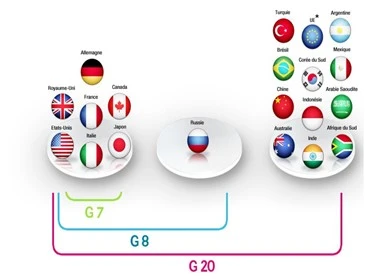
|
What is G-7? ● About: The G7 is an informal bloc of industrialised democracies, the United States, Canada, France, Germany, Italy, Japan, and the United Kingdom (UK), that meets annually to discuss issues such as global economic governance, international security, and, most recently, artificial intelligence (AI). ● History: The United States, France, Italy, Japan, the UK, and West Germany formed the Group of Six in 1975 to provide a venue for noncommunist powers to address pressing economic concerns, which included inflation and a recession sparked by the Organization of the Petroleum Exporting Countries (OPEC) oil embargo. ● Canada joined in 1976 and The European Union (EU) has participated fully in the G7 since 1981 as a “non enumerated” member. ● Russia belonged to the forum from 1998 through 2014, when the bloc was known as the Group of Eight (G8), but the country was suspended following its annexation of Ukraine’s Crimea region. ● Secretariat: The G7 does not have a formal charter or a secretariat. ● The presidency, which rotates among member countries each year, is in charge of setting the agenda. ● The 50th G7 Summit is set to be held from 13th June to 15th June 2024 in the city of Fasano in Apulia, Italy (India is invited). |
What Is the West in Geopolitical Terms?
Geographic Scope:
- The West until recently referred to Western Europe and the lands it settled, primarily North America and Australasia.
- The debate about the inclusion of Eastern Europe-considered by some as equal to that of the former Soviet sphere of influence-continues.
- However, this definition is not so clear-cut anymore. The world's growing interconnectedness challenges the clear-cut distinction between "West" and "East."
Cultural Features:
- Greco-Roman Legacy Western culture borrows significantly from the way of life, philosophies, and governance of ancient Greece and Rome, where reason, logic, and rights of individuals were stressed.
- Christianity has profoundly influenced Western values and institutions, even though religious practices have become increasingly diversified; this influence stems from Catholicism and Protestantism primarily.
Political and Economic Systems:
- Democracy is a system of representative government with individual freedoms and liberties that is a cornerstone of political systems in the West.
- Free-market economies with private ownership and competition define most Western economies.
- The West emphasises a legal system based on established laws and procedures, ensuring fairness and accountability.
Why Does India Need to Reboot Its Relations with the West?
Managing the China Challenge:
- Rising Assertiveness: China’s actions in the Indo-Pacific and its border tensions with India are significant challenges.
- Strategic Competitor: The West, especially the U.S., sees China as a strategic rival.
- Improved Relations: Stronger India-West ties would enhance coordination on economic, diplomatic, and military strategies against China.
- Joint Military Exercise: India and the US's Tiger Triumph 2024 exercise shows a commitment to security collaboration.
Balancing Relations Alongside Russia:
- Historical Ties: India's defence ties with Russia strain relations with the West, especially post-Ukraine conflict.
- Energy Security: Increased Russian oil imports despite sanctions highlight energy concerns.
- Rebooting Relations: Clarifying India's stance and finding common ground on energy and regional stability are key.
Managing the US-China Technological Decoupling:
- Tech Wars: US-China tech decoupling in AI and 5G presents a challenge for India.
- Non-alignment Risks: Staying non-aligned could hinder India’s tech and economic growth.
- Balanced Approach: Seeking a balanced stance could allow India to access Western tech while maintaining strategic autonomy.
Reshaping the Global Trade Architecture:
- WTO Challenges: The global trade order is shifting with new frameworks like the Indo-Pacific Economic Framework for Prosperity.
- Proactive Engagement: India must engage to address issues like data localization and digital taxation.
- Pivotal Player: A proactive stance could make India a key player in new trade rules.
Navigating the Geopolitics of Climate Change and Energy Transition:
- Strategic Competition: Climate change has become a strategic issue, with the West pushing for renewables and tech weaponization.
- Energy Security: India's energy needs and leadership in solar initiatives make it a crucial partner.
- Balanced Approach: A revamped partnership could aid in climate finance, tech transfers, and a balanced energy transition.
Collaborating on Regional Connectivity:
- Integrated Vision: India's regional connectivity plans, like the India-Middle East-Europe Corridor, need Western cooperation.
- Western Cooperation: Support in financing, capacity-building, and aligning with the rules-based order is essential.
What are the Friction Points Between India and West?
Differences on Global Governance and Reforms:
- India seeks changes in global governance to reflect shifting power dynamics.
- Some Western nations resist reforms that would reduce their influence, causing friction with India’s ambitions.
Intellectual Property Rights and Technology Transfers:
- India’s stance on IPR and production of affordable generics often clashes with Western pharmaceutical interests.
- The West is wary of transferring sensitive technologies to India, fearing diversion or leakage.
Strategic Autonomy vs. Alignment Expectations:
- India’s pursuit of strategic autonomy conflicts with Western desires for closer alignment, especially regarding the Russia-Ukraine War.
- India’s all-alignment policy is seen as pragmatic by India but perceived as reluctance to take sides by the West.
Divergent Approaches to Regional Security:
- India’s regional security strategies sometimes diverge from Western views.
- India’s cautious approaches to Myanmar’s political crisis and the Taliban’s takeover of Afghanistan have caused friction with Western policies.
The Khalistan Issue:
- The Khalistan movement, supported by elements within the Indian diaspora in countries like Canada and the UK, strains relations.
- India accuses these nations of allowing platforms for anti-India activities, complicating bilateral ties.
Defense Cooperation and Arms Exports:
- India’s defence collaboration with Russia, including the procurement of the S-400 system, creates tension with the West.
- Although India received a CAATSA waiver, recent concerns about its Russian ties have resurfaced, particularly from the U.S.
How Can India and the West Reconcile Their Differences?
Establish a Plurilateral Tech Alliance:
- India and the West could establish a plurilateral technology alliance to develop standards for critical technologies like AI, quantum computing, and cyber security.
- This would facilitate joint research, knowledge sharing, and co-development, ensuring a level playing field and protecting strategic interests.
Create a Renewable Energy and Climate Innovation Fund:
- India and the West could jointly create a fund dedicated to clean energy research, development, and deployment.
- Projects in green hydrogen, carbon capture, sustainable aviation fuels, and climate-resilient infrastructure would be supported, fostering collaboration and addressing technology transfer and finance concerns.
Joint Framework for Responsible Space Exploration:
- India and the West could develop a joint framework for responsible space exploration and governance.
- This would address sustainable space resource utilisation, space debris prevention, and the peaceful use of space, promoting cooperation while respecting strategic interests.
Focus on Regional Trade Agreements:
- Instead of a pan-India-EU FTA, India could pursue regional trade agreements with specific countries, like the recent TEPA with the European Free Trade Association.
- These agreements allow for faster progress and cater to diverse economic interests.
Issue-Based Alignment:
- India could adopt an "issue-based alignment" approach, cooperating on mutual concerns while maintaining its independent stance on other matters.
- Establishing dialogue mechanisms would help address misperceptions about India's strategic autonomy, ensuring transparency and open communication.
|
UPSC Civil Services Examination, Previous Year Questions (PYQs): Prelims Q:1 Recently, India signed a deal known as ‘Action Plan for Prioritisation and Implementation of Cooperation Areas in the Nuclear Field’ with which of the following countries? (2019) (a) Japan Ans: (b) Q:2 Among the following Presidents of India, who was also the Secretary General of the Non-Aligned Movement for some period? (2009) (a) Dr. Sarvepalli Radhakrishnan Ans: (c) |
Source: IE
Share the article
Edukemy’s Current Affairs Quiz is published with multiple choice questions for UPSC exams
MCQ
Get Latest Updates on Offers, Event dates, and free Mentorship sessions.

Get in touch with our Expert Academic Counsellors 👋
FAQs
UPSC Daily Current Affairs focuses on learning current events on a daily basis. An aspirant needs to study regular and updated information about current events, news, and relevant topics that are important for UPSC aspirants. It covers national and international affairs, government policies, socio-economic issues, science and technology advancements, and more.
UPSC Daily Current Affairs provides aspirants with a concise and comprehensive overview of the latest happenings and developments across various fields. It helps aspirants stay updated with current affairs and provides them with valuable insights and analysis, which are essential for answering questions in the UPSC examinations. It enhances their knowledge, analytical skills, and ability to connect current affairs with the UPSC syllabus.
UPSC Daily Current Affairs covers a wide range of topics, including politics, economics, science and technology, environment, social issues, governance, international relations, and more. It offers news summaries, in-depth analyses, editorials, opinion pieces, and relevant study materials. It also provides practice questions and quizzes to help aspirants test their understanding of current affairs.
Edukemy's UPSC Daily Current Affairs can be accessed through:
- UPSC Daily Current Affairs can be accessed through Current Affairs tab at the top of the Main Page of Edukemy.
- Edukemy Mobile app: The Daily Current Affairs can also be access through Edukemy Mobile App.
- Social media: Follow Edukemy’s official social media accounts or pages that provide UPSC Daily Current Affairs updates, including Facebook, Twitter, or Telegram channels.

